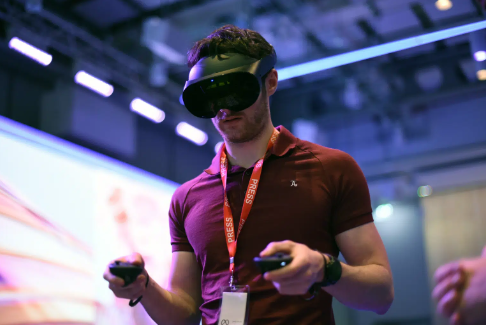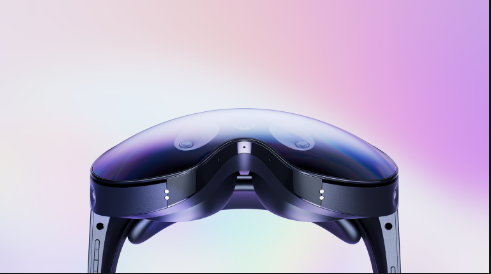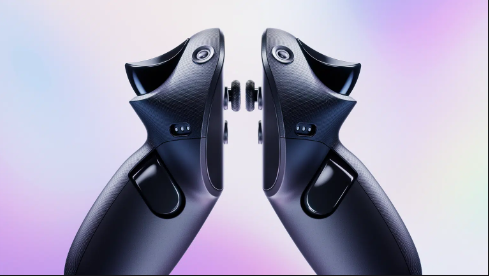Meta Quest Pro Begins Shipping Today
The Meta Quest Pro headset has begun shipping today bringing the much-desired features such as color passthrough and face tracking to the standalone virtual reality experience. The headset costs $1,500.
The Quest Pro headset is a new product line altogether and is neither a successor nor a variant of Meta’s widely popular Quest 2 headset which has shipped over 15 million units so far. This is the company’s first “high-end” headset and its main market includes professionals, developers, early adopters as well as businesses.
The Quest Pro headset is being marketed as a virtual reality and mixed reality device.
For its mixed reality functions, the headset displays a 3D color view of the room you are in which is reconstructed through the front cameras, and the virtual objects are overlaid on your view of the real world.

The Quest Pro headset can be worn without a facial interface, unlike many other virtual reality headsets. This enables you to view the outside world, both below you and in your peripheral vision. The Quest Pro headset rests against the wearer’s forehead and it does not touch their cheeks.
For virtual reality uses or where you are using it in a brightly lit room that is reflecting in the lenses, you can use the included light blockers which magnetically attach to the sides of the device.
Blocking the real world below your eyes will require the purchase of Meta’s Full Light Blocker which costs $50. There are also third-party alternatives that you can use for this purpose.
The visor in the Quest Pro headset is much slimmer than that of the Quest 2 headset. This has been made possible through the use of pancake lenses.

Pancake lenses, a new innovation that is soon becoming standard in many virtual reality headsets, can support much smaller panels that have shorter gaps to the lenses. The pancake lenses offer a much better visual clarity as well as a wider field of view over the Quest 2 headset.
The Quest 2 headset only provides three preset lens separation distances. On the other hand, the Quest Pro headset has continuous lenses capable of supporting a wide range of interpupillary distances (IPDs).
The battery in the Quest Pro headset is positioned in the rear of the strap thereby serving as a counterbalance. Meta says this battery lasts anywhere from 1 to 2 hours based on the content. Overall, the Quest Pro headset is heavier than the Quest 2 headset but it has a much lighter visor.
The Quest Pro headset has dual 1800×1920 advanced LCD panels that are built with quantum dots and local dimming mini-LED backlights. This gives them a 30% wider color gamut along with 75% better contrast than the Quest 2 headset. The Quest Pro headset has a lower resolution than the Pico 4 headset. Its resolution is, however, higher than that of the Quest 2 headset with its resolution of 1720×1890 per eye.
The Quest pro headset is the first that makes use of the Snapdragon XR2+ chip. According to Meta, the chip gives the headset 50% more power than the Quest 2 headset with improved thermal dissipation which gives the headset “significantly better performance”. Meta has clarified that 50% more power refers to the increased SoC power that is supporting the additional sensors and new use cases. The apps that aren’t using Quest Pro’s new features will only register “a little more performance headroom” according to a Meta representative.
The Quest Pro headset features both eye tracking and face tracking, enabling your facial expression and real-time gaze to be mapped onto your avatar.
The headset has a total of five internal cameras including a camera for each eye, a camera for the upper face, and two cameras for the lower face. In theory, the headset’s three face cameras should give it a higher fidelity face tracking performance than HTC’s one camera add-on for its Vive Focus 3.
The eye-tracking functionality is optional. However, when a user activates, they are guided to see the precise lens separation for their interpupillary distance (IPD). This also enables the Eye Tracked Foveated Rendering, a technique that allows only a small section that your eyes are focusing on to be rendered with a full resolution with the peripheral vision being blurred. Foveated rendering frees up the headset’s performance as the other sections are rendered at a lower resolution.

The Quest Pro headset also ships with included Touch Pro controllers that are self-tracking and feature three cameras and an onboard chipset. The Touch Pro controllers offer tracking in the full 360-degree range of motion. The new controllers also have some sets of new features such as three motors that deliver precise haptics, index finger sensing as well as a pressure-sensing thumb grip. There are also included stylus tips that attach to the bottom of the input devices and can be used as pens to draw on virtual whiteboards. The Touch Pro controllers will be available to Quest 2 owners before the end of the year and will cost $300.
The Quest Pro headset taps into the same Meta Quest Store with the same apps and games as Quest 2. Existing Quest owners won’t need to purchase the content again for use with the Meta Quest Pro.
The Quest Pro headset carries a price tag of $1,500. This price includes the headset, controllers, side light blockers, a portable controller charger cable, stylus tips, a charging dock, and a 45W USB-C charger.
Both the headset and the controllers will attach to the charging dock via magnetic pogo pins. However, the headset can also be charged through a USB-C.
The Quest Pro headset is available in the Meta Store online in a number of countries including Canada, the US, the UK, Germany, France, Spain, Italy, Australia, Sweden, Belgium, Finland, Denmark, Ireland, Norway, Poland, South Korea, New Zealand, Japan, and Taiwan.
The headset is also sold on Amazon in the US, Canada, UK, and France. On Best Buy, it is available in the U and Canada while on Argos & Currys, it is sold in the UK.
https://virtualrealitytimes.com/2022/10/25/meta-quest-pro-begins-shipping-today/https://virtualrealitytimes.com/wp-content/uploads/2022/10/Meta-Quest-Pro-Headset.pnghttps://virtualrealitytimes.com/wp-content/uploads/2022/10/Meta-Quest-Pro-Headset-150x90.pngBusinessHardwareThe Meta Quest Pro headset has begun shipping today bringing the much-desired features such as color passthrough and face tracking to the standalone virtual reality experience. The headset costs $1,500. The Quest Pro headset is a new product line altogether and is neither a successor nor a variant of Meta’s...Rob GrantRob Grant[email protected]AuthorVirtual Reality Times - Metaverse & VR
